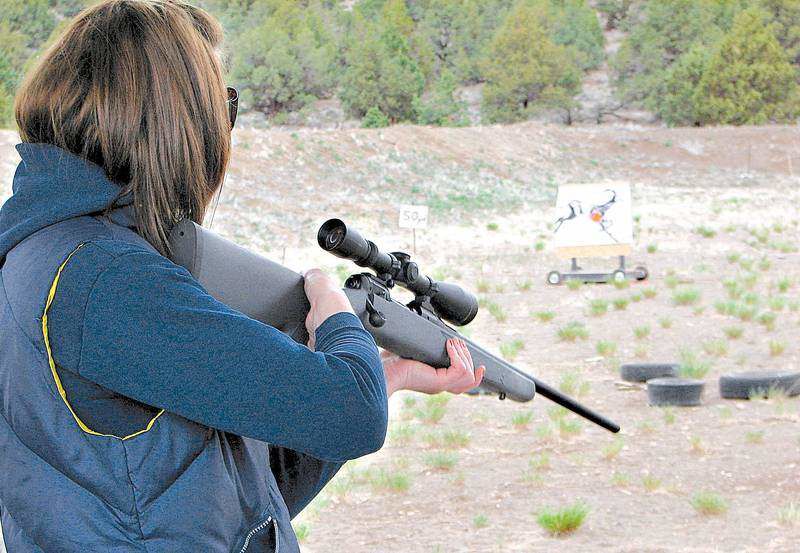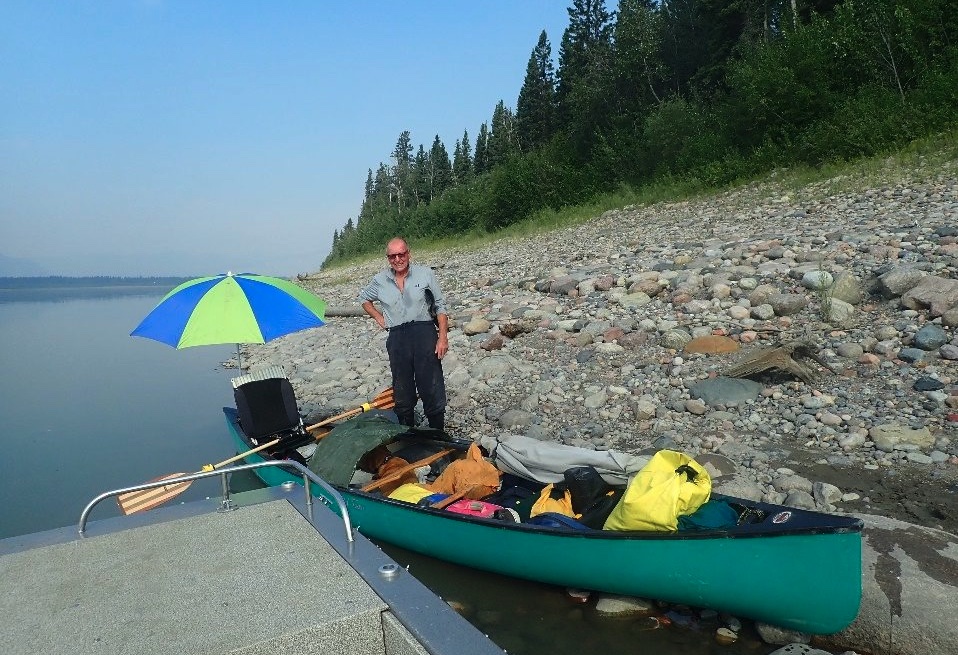Youth Safari Challenge teaches focus, safety
Published 5:00 am Thursday, May 29, 2008

- Caitlin DeCelles prepares to take on the running impala target at the Youth Safari Challenge held last Saturday at the Central Oregon Shooting Sports Association Range east of Bend.
Tent camps and tse-tse flies; mosquitoes and malaria; the roar of a lion in the dead of the night. We had none of that. But we did have a facsimile of a rogue cape buffalo, a charging lion and other glorious paper creatures from Africa. And sand.
Jarred DuPont, 12, of Madras, lay with his belly on the ground, legs at an angle, toes digging in. He thumbed a single .22 round into the chamber of the single-shot rifle and pulled the front sight and the target into focus. The rifle cracked and he ejected the spent cartridge and loaded another to take a shot at the warthog and finally the cape buffalo. With open sights, he shot a perfect score on station one.
We met on a windswept sandy plain beneath sullen skies. Eighty kids, aged 6 to 18, and their parents gathered to take themselves on an imaginary hunt. We called it the Youth Safari Challenge, a competition that consisted of four events: .22 rimfire antelope; centerfire Big Game; archery and a clay pigeon course, throwing the “birds” straightaway like sand grouse on the Kalahari.
With the rest of the world a blur, front sight and target in sharp focus, the shooters could almost see themselves in the mopane scrub, gun in hand, stalking the wild beast.
Held at the Central Oregon Shooting Sports Association Range, east of Bend, the free event was sponsored by the High Desert Safari Club, the Bend Oregon Hunters Association, Sportsman’s Warehouse, Wild Winds Ranch and several individuals who donated time and money to make it work.
Leon Pantenburg taught fire-making at station one to keep kids interested and occupied while their peers were on the firing line. With lots of flammables and ways to get them lit, he was never without an audience.
Awards were given in three age groups: 8 to 11; 12 to 15 and 16 to 18. To be competitive, a shooter had to compete in all four stages.
The most difficult stage was at station number two. Here, the youngster learned the safe operation of a Savage bolt-action .223 rifle then put it into use with three rounds. One each at a charging lion (25 yards), a running impala (40 yards) and an eight-inch steel gong at 100 yards. For a top score of 45 points on this stage, the shooter was required to hit a six-inch circle from a standing, off-hand position.
The running impala didn’t move quite as fast as an impala might move on the Dark Continent. The paper target was mounted on a sheet of plywood attached to a rolling platform, motivated by a kindly volunteer yarding a nylon rope. It kind of trundled along, but the six-inch orange vital-area was still a challenging target.
Several kids from each age group shot a perfect score at station two and were in the running to win it all.
Many of the kids had never held a rifle or pulled a bowstring before. Some of these did very well. A few youngsters opted out of the 20-gauge “sand grouse” shoot. My 11-year-old daughter Mikayla said she saw a few kids rock back on their heels with the recoil, but no one actually fell over.
Cameron Kruger, 10, scored 74 points out of a potential score of 96 to win his division. Cole Craig, 14, with a final score of 94, was one clay pigeon away from youth safari perfection. Tiffany Lewis, 17, shot stations one, two and four perfect, to win her division with 83 points.
Down on the ground with a rifle, faced off against a glowering cape buffalo, you could see the tension on their faces. Grit under the elbows and the dark clouds above made it almost real. Now was the time to focus, to pay attention to the fundamentals, to put the bullet where it would do the most good — in that orange spot low on the body.
Afterward, their eyes glinted with the glow of a job well done or the resolve to do better at the next station.
Some of the kids may never shoot again. A few came from families that don’t own guns and don’t hunt. Now they have a bit of an understanding of the safe use of a firearm.
For others, it was good practice in advance of hunter education class or for hunting season this fall. For all, it was an exercise in fine motor skills, concentration, and the single-minded focus that strips away distractions and leaves only elements: earth, sky, habitat, hunter and target.








